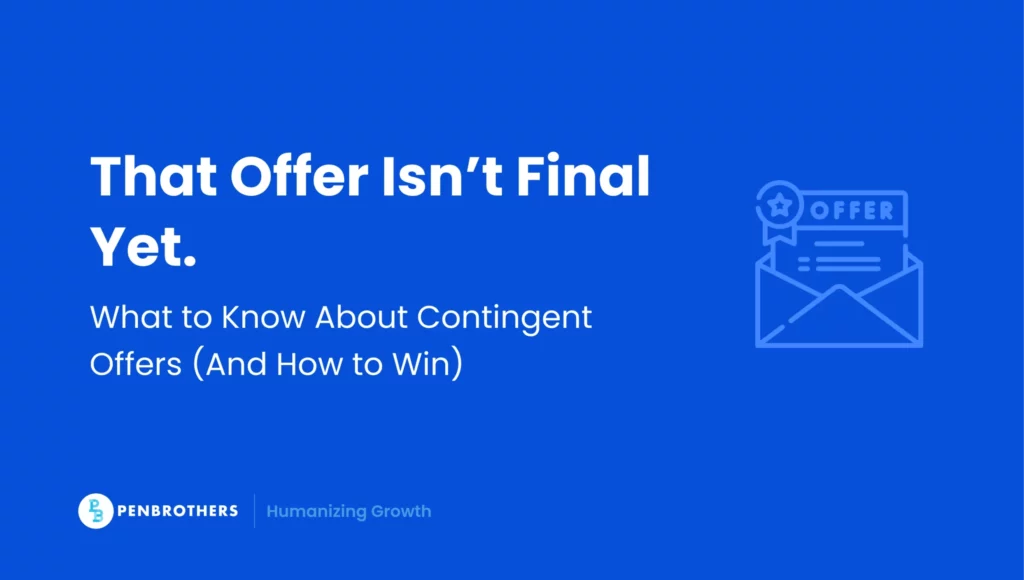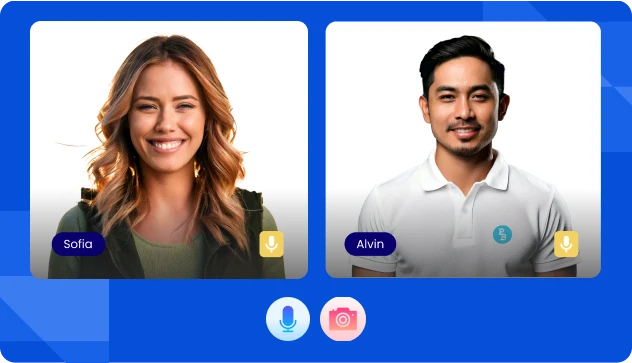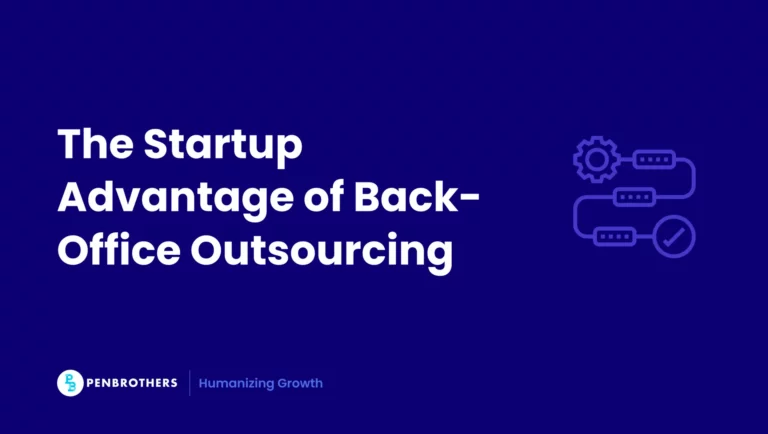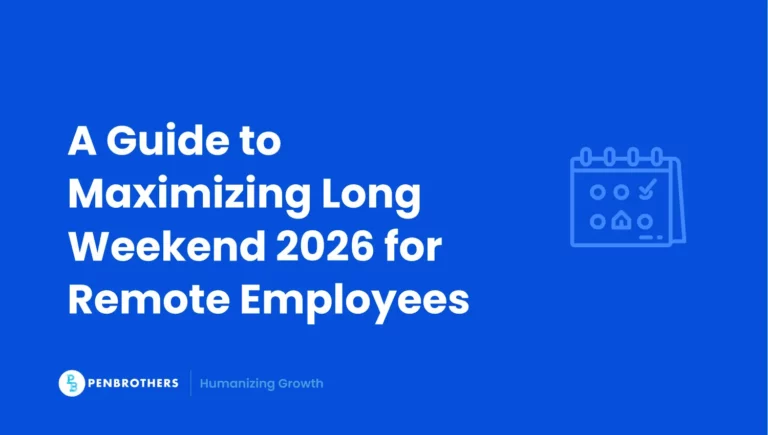You finally get the call: “We’d like to offer you the position!” But there’s a catch: the offer depends on passing a background check, a medical exam, or reference verification. Welcome to the world of contingent job offers, a common yet often misunderstood part of the modern hiring process.
This guide will break down what a contingent offer really means, how it differs from other types of job offers, and what both job seekers and employers should keep in mind to avoid confusion and delays. If you’re wondering what is a contingent job offer, you’re in the right place.
Key Takeaways
- A Conditional Offer, Not a Final Guarantee: A contingent job offer means you are the employer’s top candidate, but the offer is conditional upon you successfully meeting specific requirements, such as passing a background check, reference verification, or a medical exam.
- A Strong and Positive Signal: Receiving a contingent offer is an excellent sign. It indicates that the company has likely stopped interviewing other candidates and is invested in hiring you. For truthful candidates, the vast majority (90-95%) of these offers convert to final, unconditional employment.
- Always Get the Contingencies in Writing: A legitimate contingent offer should always be documented in a written letter. It is crucial to have a clear statement outlining the specific conditions that must be met, the timeline for meeting them, and the full terms of the offer.
- Continue Your Job Search Until the Offer is Final: Because a contingent offer is not a certainty, the most strategic move for a job seeker is to continue their job search and other interview processes. You should only pause your search once all conditions have been met and you have received a final, unconditional offer.
What Is a Contingent Job Offer?
A contingent job offer is a conditional employment offer that becomes final only when certain criteria are met. These conditions might include passing a drug test, background check, credential verification, or security clearance. Unlike a final job offer, which signals immediate employment, a contingent offer means you’re almost hired, but not yet.
Here’s how it compares to other offers:
- Unconditional Job Offer: Employment starts immediately with no additional requirements.
- Contingent Offer: Employment starts only if you meet specific conditions.
- Contract Offer: Often tied to project-based or time-bound work, with no expectation of permanence.
Examples:
- A tech applicant must pass a background check.
- A finance candidate needs to clear a credit screening.
Understanding contingent job offers helps set realistic expectations. They’re not rejections in disguise. They’re a step toward landing the role, provided you meet the outlined requirements.
Related: How to Follow Up on Your Interview without Sounding Pushy
Does a Conditional Offer Mean I Got the Job?
Yes and no. A conditional offer means you’re the chosen candidate, but you haven’t crossed the finish line yet.
Think of it this way: You’ve won the race, but officials are still checking if you stayed in your lane. The employer wants to hire you—they’ve already decided you’re their top choice. But they need to verify everything checks out before making it official.
Here’s what this really means:
You’re ahead of other candidates. The company has stopped interviewing and chosen you. That’s significant.
But you’re not employed yet. Until all conditions are met, you don’t have a job. The offer can still be withdrawn if something goes wrong.
The company is invested in you. They’ve committed resources to background checks and paperwork. They want this to work out.
I’ve seen conditional offers fall through for various reasons: failed drug tests, embellished credentials, or negative references. But these are exceptions. Most conditional offers (roughly 90-95%) convert to final offers when candidates have been truthful throughout the process.
The key? Treat the conditional phase seriously. Respond promptly to requests. Provide accurate information. Stay professional in all communications. Your conduct during this period is part of the evaluation.
Contingent vs. Temporary, Contract, or Freelance Work
Job seekers often confuse a contingent offer with contract or temporary roles, but the differences are important:
| Type of Role | Definition | Duration | Employer Commitment |
| Contingent Offer | Full-time role, pending conditions | Permanent (if cleared) | High |
| Contract Work | Fixed-term project or scope | Temporary | Medium |
| Freelance Work | Self-employed task-based engagement | Varies | Low |
| Temporary Job | Short-term placement, often via a staffing agency | Temporary | Low to medium |
Pros and Cons for Candidates:
- Contingent Offers: May lead to long-term employment but come with uncertainty.
- Contract Roles: Offer clear timelines but limited stability.
- Freelance/Temp: Provide flexibility, often at the cost of benefits.
Contingent offers signal long-term intent from employers unlike temp or freelance work, they’re often stepping stones to full-time positions once initial conditions are met.
Legal Considerations Every Candidate Should Know
Is a contingent job offer legally binding? The answer depends on your location.
In many jurisdictions (like the U.S.), employment is “at-will,” meaning offers, even signed ones, can be rescinded before or after contingencies are met. In countries like the Philippines, labor laws may impose stricter obligations once documentation is signed, even if contingencies exist.
Key Legal Points:
- Employers can withdraw offers if the contingencies aren’t met.
- Candidates can also walk away before accepting final terms.
- It’s crucial to request a written offer clearly outlining the contingencies.
Pro Tip:
Always clarify if the job is “at-will” and understand your rights if the employer retracts the offer.
Contingent offers live in a legal gray zone. Knowing your local laws and getting everything in writing protects you during this limbo period.
How to Negotiate a Contingent Job Offer (Yes, You Can!)
Even if conditions are attached, you can still negotiate. Here’s how to negotiate a job offer with conditions:
- Clarify Contingencies: Ask exactly what needs to be completed and by when.
- Negotiate Timing: “Can the start date move based on background check results?”
- Discuss Salary or Benefits: Especially if delays could affect your current work situation.
Sample Script:
“Thank you for the offer. To ensure a smooth transition, may I suggest we confirm the start date after all pre-employment checks are finalized?”
Negotiating a contingent job offer shows confidence and helps prevent surprises later. It’s your right. Use it wisely.
Related: How to Negotiate Your Salary (with Proven Tips)
Red Flags and Risks to Watch For
While most contingent offers are routine, some signal trouble. Be alert to the risks of contingent job offers, such as:
- Vague conditions with no timelines
- No written documentation
- Delayed responses from the employer
- Sudden changes to the original offer
These may point to internal disorganization, shifting priorities, or unstable funding. If something feels off, trust your gut. A contingent offer should feel like a step forward, not a stalling tactic.
Related: Questions You Should Ask HR in Your Job Interview
How to Make a Great Impression During the Contingent Phase
This waiting period is a hidden opportunity. Here’s how to stay visible:
- Prepare all documents in advance
- Follow up weekly with HR
- Send a thank-you note reaffirming your excitement
- Maintain a professional tone in every exchange
Why it matters: Employers often continue evaluating fit during this phase.
Think of the contingent phase as your soft launch into the company. Stay ready, stay present, and stay professional.
Career Strategy: Should You Wait or Move On?
A contingent offer is not a guarantee. If you’re in high demand, ask yourself:
- Is the delay reasonable?
- Is this role worth pausing your job search?
- What’s the risk of turning down other offers?
If in doubt: Continue job hunting until the offer becomes official.
Don’t let a maybe derail your momentum. Your career strategy should prioritize certainty, alignment, and growth.
The Employer’s Angle: Why Contingent Offers Exist
From the employer’s side, these offers reduce risk. Common reasons include:
- Compliance (especially for regulated industries)
- Security (ensuring hires meet legal and internal standards)
- Cost control (avoiding premature onboarding)
Best Practices for Employers:
- Communicate clearly and often
- Provide timelines and next steps
- Reduce ambiguity to keep candidates engaged
Contingent offers can protect companies, but they must be managed well to avoid losing great candidates.
Finalizing a Contingent Offer into a Full Offer
Once all conditions are met, employers typically:
- Issue a final written offer or contract
- Set a firm start date
- Begin onboarding
Candidates should confirm:
- Role title and responsibilities
- Compensation package
- Work location or remote setup
The finish line is in sight. Confirm all the details before saying “yes” a second time, and get ready to start strong.
Conclusion: Your Power Move Starts Here
Contingent job offers are more than HR formalities. They’re pivotal steps in today’s hiring landscape. Whether you’re a job seeker navigating uncertainty or an employer aiming to hire responsibly, knowledge is your best tool.
Be proactive. Ask the right questions. Stay engaged. And when the moment comes, move forward with confidence. Do you have a contingent offer? Use this guide to make your next move with clarity and purpose, or you can also check our open roles with flexible work setups and competitive salaries.
Checklist: What You Should Do When You Get A Contingent Job Offer
Frequently Asked Questions
A contingent job offer is a conditional offer of employment. It means you will be hired for the position only if you successfully meet certain specified requirements, such as passing a background check, a drug test, or a reference verification.
It means you are the company’s preferred candidate, but you do not officially have the job yet. The offer can still be withdrawn if you fail to meet the specified conditions. However, for most candidates who have been honest throughout the process, 90-95% of these offers become final.
A contingent offer is typically for a permanent, full-time position that is simply pending final checks. A contract or temporary job is for a fixed term or a specific project from the outset, with no initial expectation of permanence.
Yes, you can still negotiate. While the contingencies themselves (like the background check) are usually non-negotiable, you can and should discuss other terms. This can include clarifying the timeline for the checks or confirming that the start date is flexible and will be finalized only after the results are in.
No. Because the offer is not yet final and can still be withdrawn, the safest and most strategic approach is to continue your job search and interviewing with other companies. You should only stop your search once all contingencies have been cleared and you have received a final, unconditional written offer.






